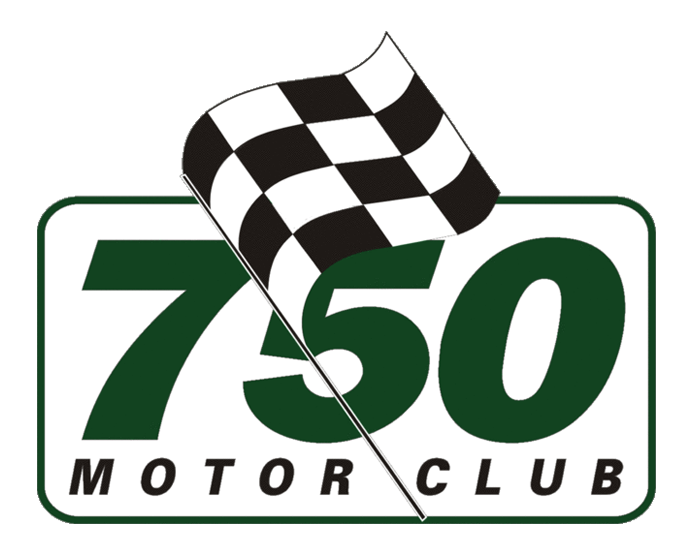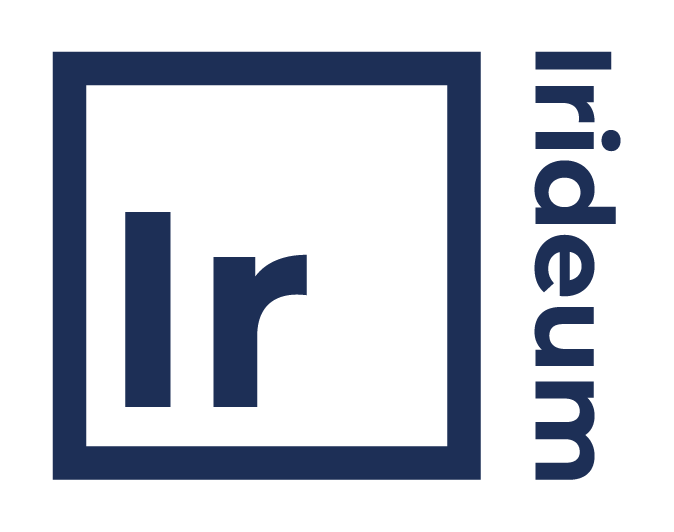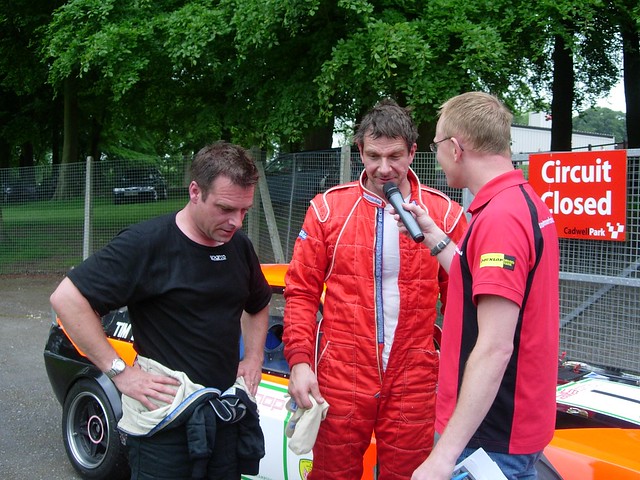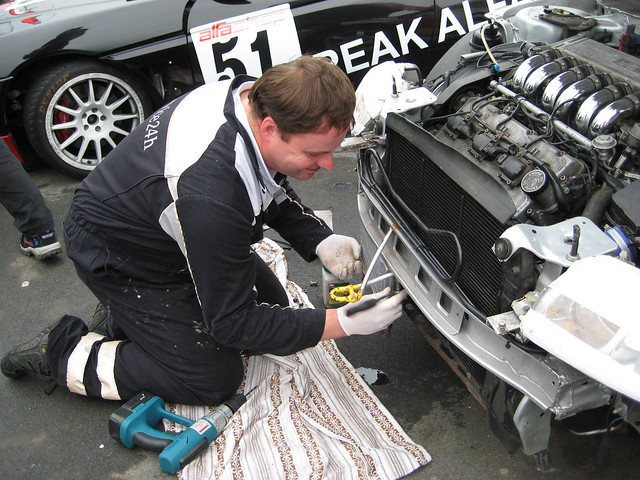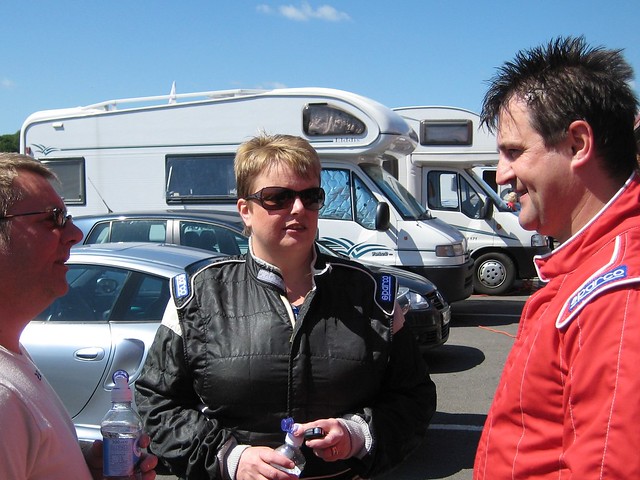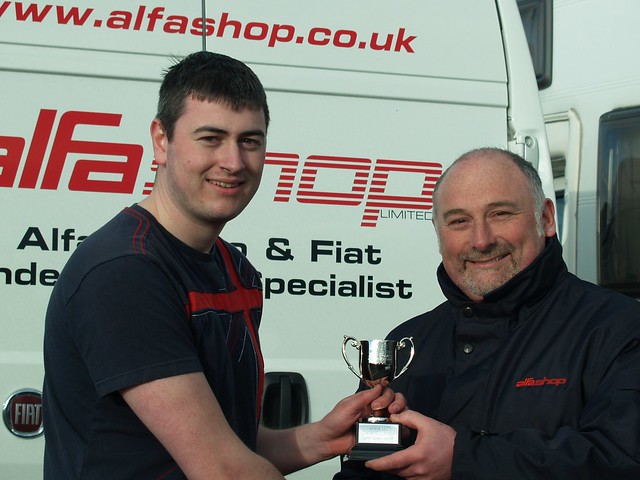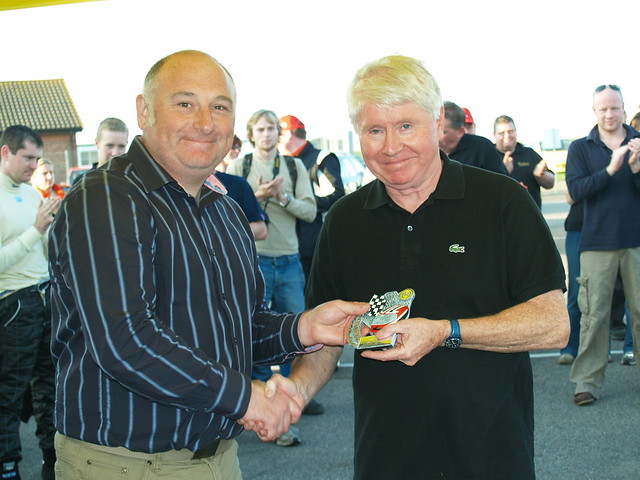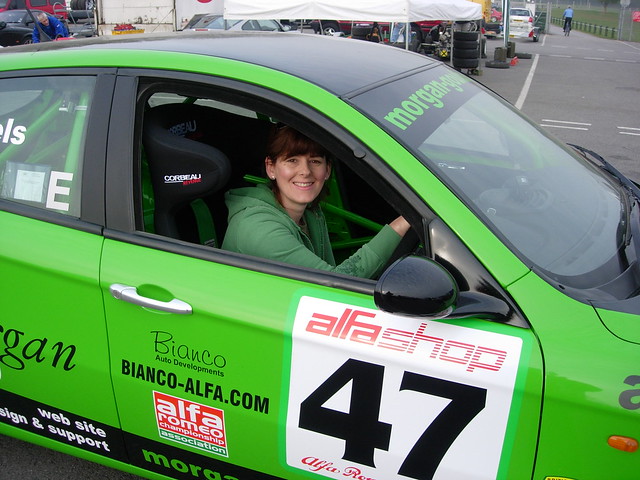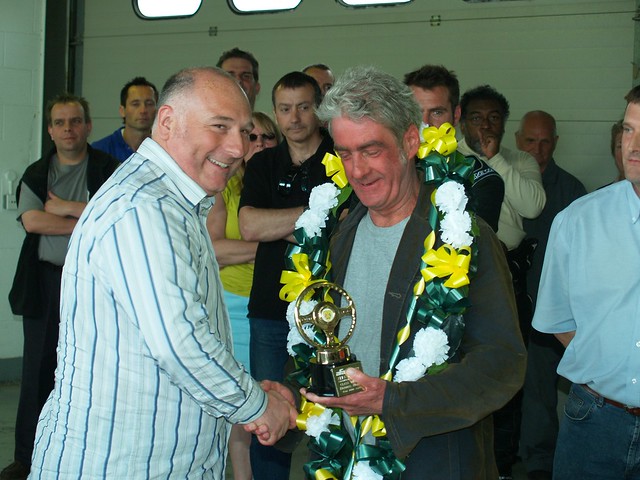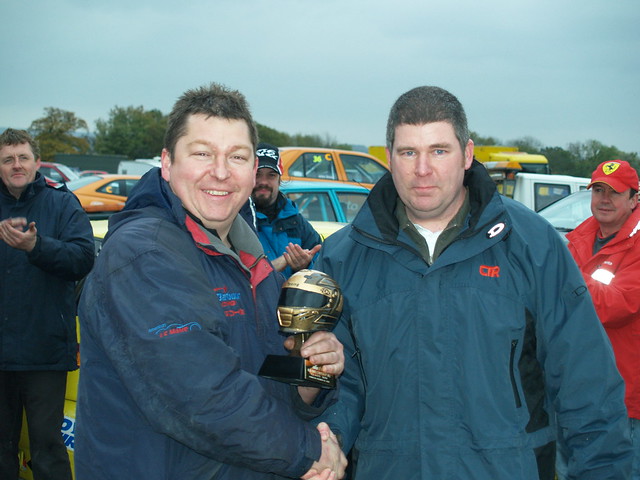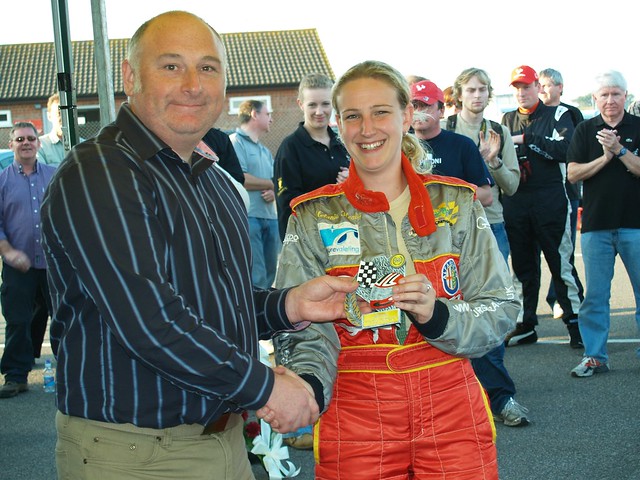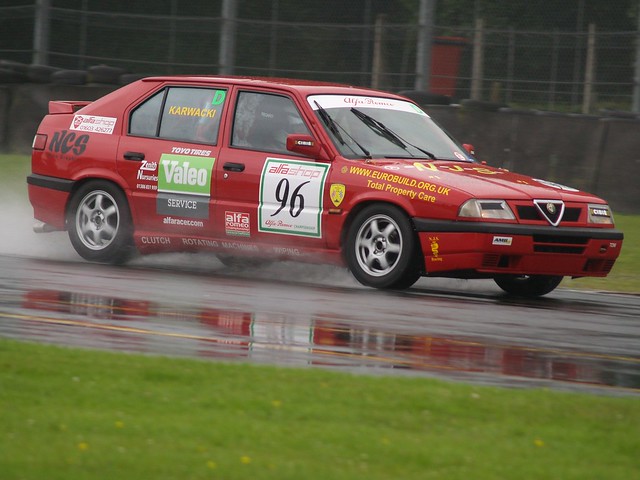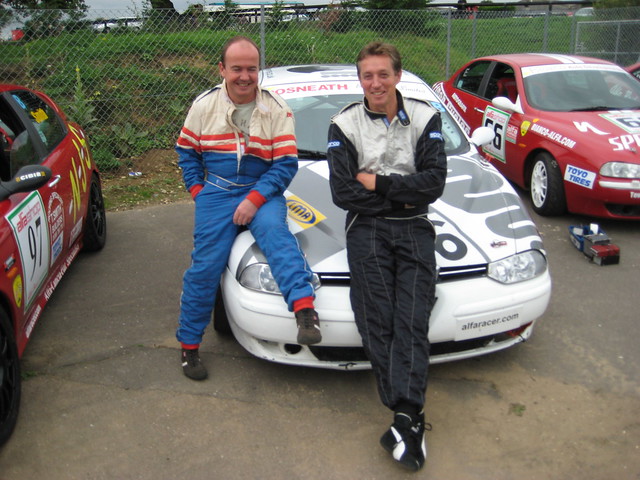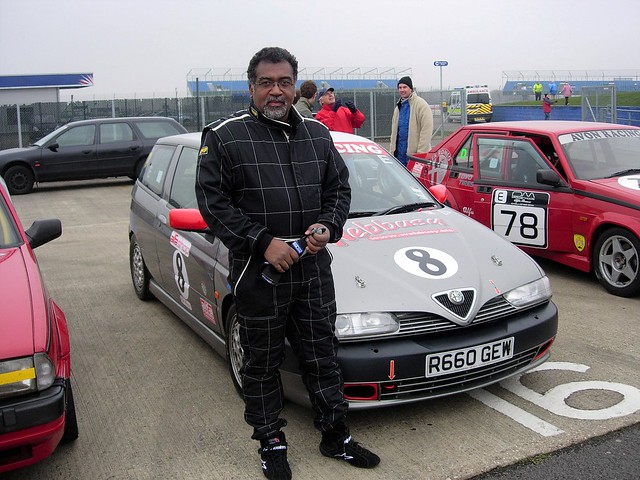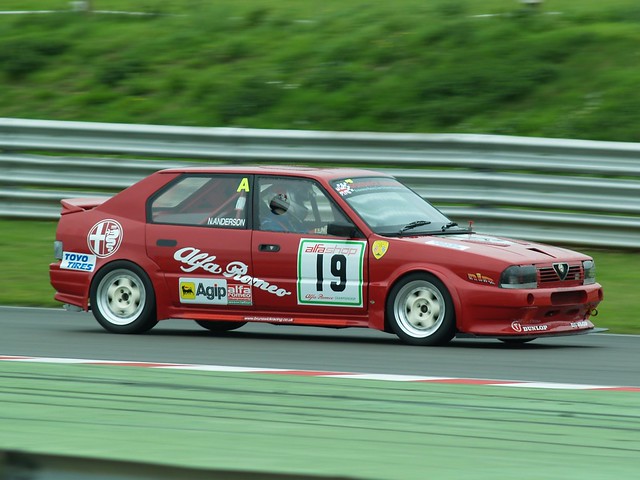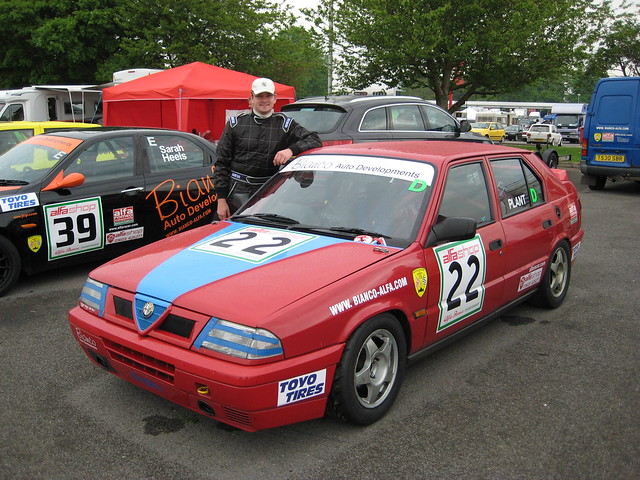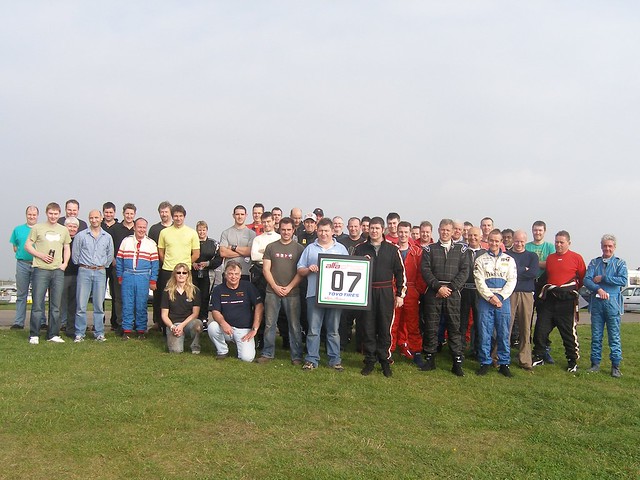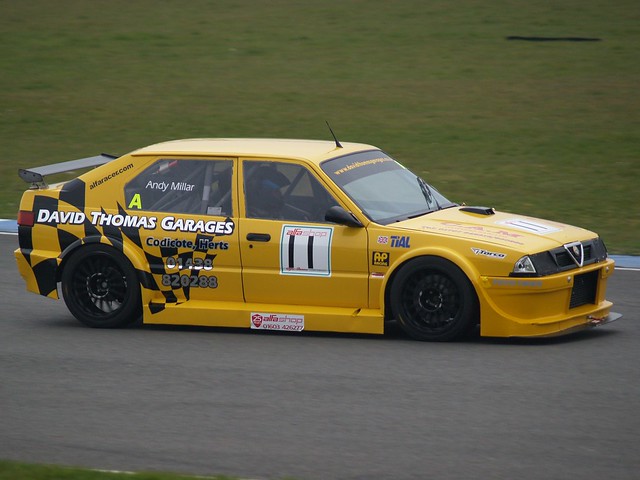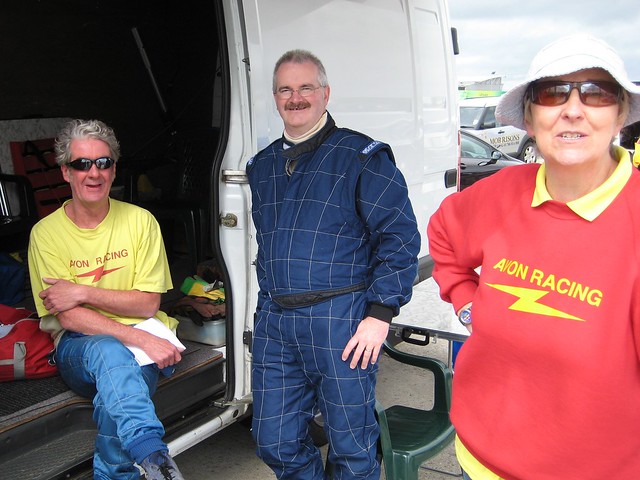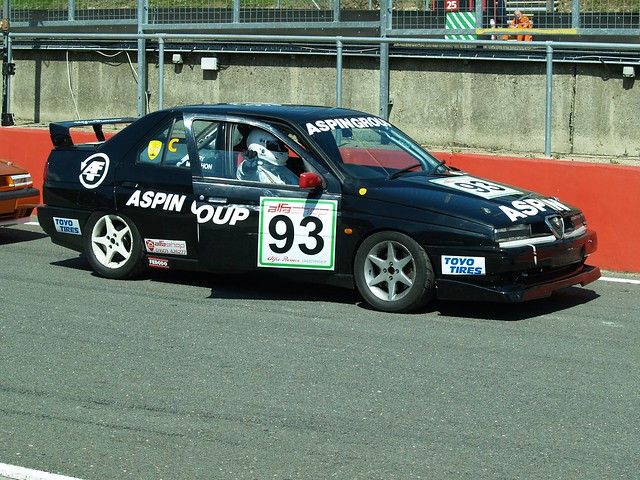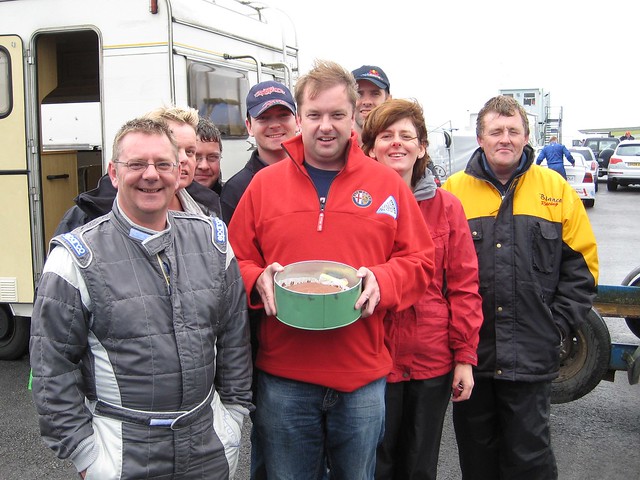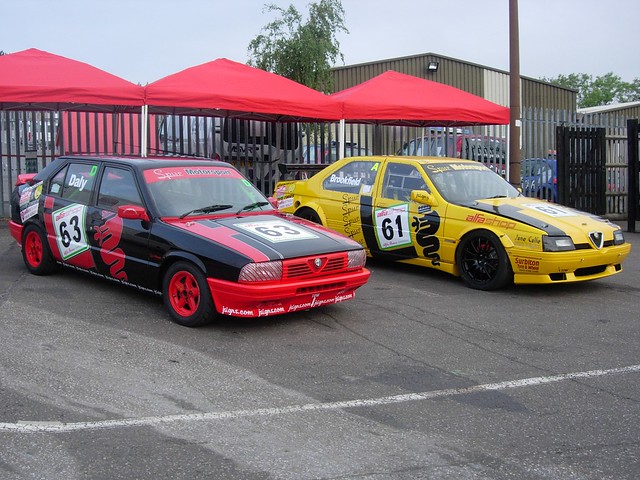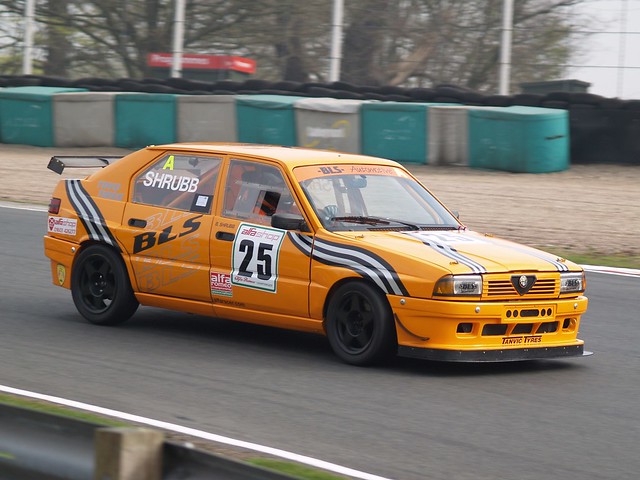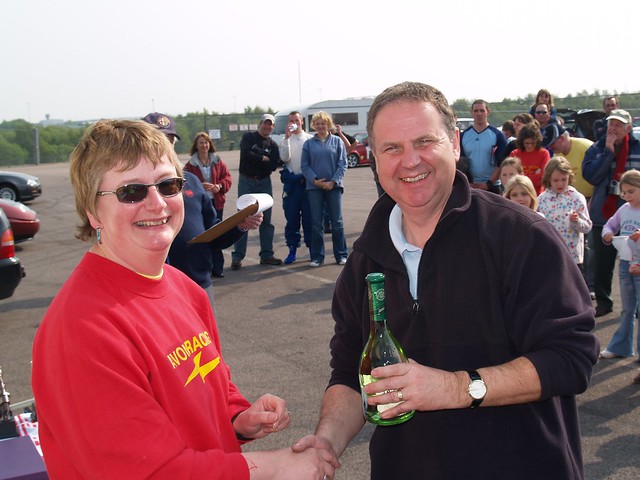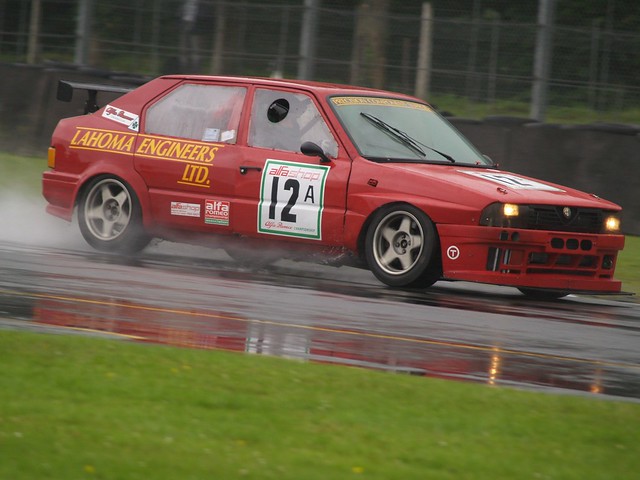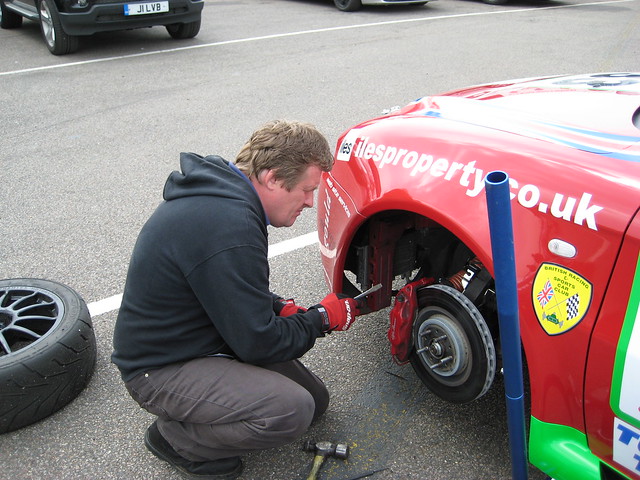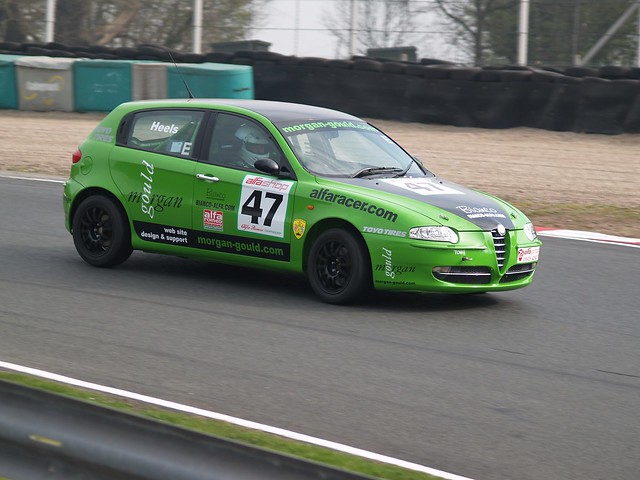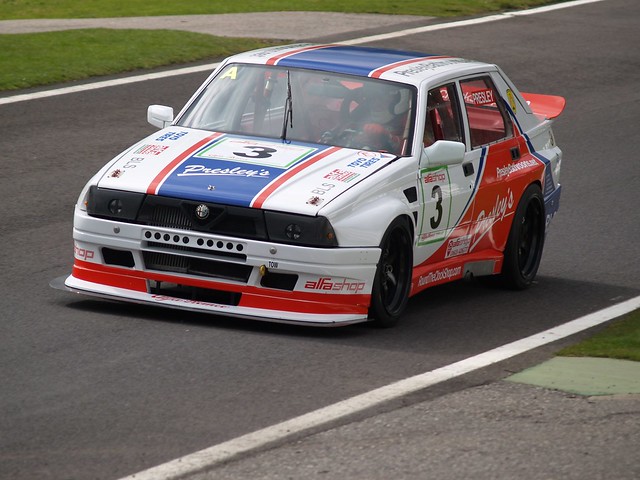The Government’s announcement that outdoor sport can resume after March 29th, much as it did last July after the end of Lockdown One, has understandably raised hopes that our season can begin at Silverstone on Easter Saturday (April 2nd).
So far Motorsport UK has announced nothing definite, nor has the 750 Motor Club, but I am sure that Andy Robinson will be posting a Paddock Bulletin as soon as they do. In the meantime, there is every sign that International events will continue to ramp up, although the difficulties caused by travel bans of one sort or another still make cross border travel a nightmare. Over the last couple of weeks we have seen announcements from most of the F1 teams showing their 2021 cars, including Alfa Romeo which launched the C41 in Warsaw earlier this week. In this issue of Friday Fix, we have continued our look at the championship classes, this time in 2007 and 2008 which were both very busy years. There will be many familiar names, some of whom are still racing with us, as we enter the 2021 season. We also start to reflect on the Italian Intermarque challenge which, looking at Facebook recently, arouses some fond memories from competitors, a large number of whom were racing Alfa Romeos. This of course changed into the “Auto Italia” championship and ran under the stewardship of Phil Ward and Tony Soper for many years.
“ALFA ROMEO RACING” LAUNCH 2021 CHALLENGER

It seemed strange to have an Alfa Romeo Grand Prix car launch in Poland until you remember that the team’s current main sponsor is petrochemical giant Orlen and that their test and reserve driver, Robert Kubica is also Polish. 2021 regulations have mandated a loss of downforce which has been achieved by a reduction in the floor size from the bargeboard area backwards. What is allowed with the front wing design has also been changed but, as displayed, the C41’s multi- plane front wing looks notably complicated and also vulnerable to any collision damage. The front wings on other cars launched recently, like the Alpha Tauri and McLaren, appear much stronger and I suspect, from remarks made by chief designer, Jan Monchaux, that this may well change on the C41 before testing gets underway in Bahrain next month. With major regulation changes coming in 2022, it appears certain that the current car will have little real development in 2021 and that the team will be hoping for a much better Ferrari engine to help them out in the coming season in their quest to move up the mid field. One little oddity I noticed in the launch pictures was that someone had been looking in the “old sticker box” and found the 1970s Autodelta chequered flag in a blue triangle decal which had been suitably modified to add to the ever present Quadrifoglio on the latest car.
ALFA CHAMPIONSHIP CLASSES 2007 – 2008
There had been much discussion during 2006 about the need to encourage more entries (nothing new there then!). A problem had been caused by the MSA’s decision to increase permitted grid sizes on most circuits for 2006 which meant that having a separate race for Class F was no longer financially viable for the organisers. I came across an e-mail that I had sent to Julian Birley on 18th October 2006 in which I wrote that “a full 38 car grid is great if we can get it…..” I followed that by saying that “the reason Class F has fallen away is that as they no longer have their own races, they don’t have the chance of an outright win and consequently don’t get noticed as much”. I added what may be seen as a contentious note by saying that “no longer do the majority just go racing for the fun of it, racing against anyone they happen to come up against” but quoted as a “shining example” someone who did – Steven Griffin with his GTV6.
The Championship Panel pondered long and hard about what to do for 2007 and came up with a decision to change the class structure, reducing the number of classes from seven to five by re-arranging classes C & D, moving class F into a new Class D while establishing a new Class E out of the previous Class G as the great white hope for the future. This was on the basis that as more 16v Twin Spark cars became available at reasonable prices, class E would grow strongly. 2007 was something of a slow-burner for E, but it more than doubled in size in 2008 and, as we know, became the basis of the successful “Twin Spark Cup”. Those classes using a control tyre would now be on Toyo rubber in place of Dunlop
2007
Class A. Class A saw a highly competitive year in 2007 as Ian Stapleton (GTV6 3.8), Tim Lewis (Alfasud Sprint). Adie Hawkins (33 16v 2.0) and Andy Page (Giulietta Turbo) fought it out for class honours, with Roger Evans (GTV 3.8) and Bryan Shrubb (33) making their presence felt at various times. Someone else who might have made a bid for the class win if he had raced more was Andy Miller in the ex Ray Mears 33 Turbo, now prepared by David Thomas. Chris Snowdon suffered reliability problems in the Lahoma 33 but did grab a 2nd place at Oulton behind Tim Lewis. Despite a late challenge by Tim, it was Ian Stapleton who took the class, 16 points clear, with Adie Hawkins a strong third.
Class B
Class B was to be dominated by Neil Smith’s 156 TS, taking 10 wins in the 13 races and he would probably have won the Championship overall had he not suffered lost points through a lack of entries early on in the year. Nev Simpson had fitted a 2.5 V6 engine in his Alfetta GTV and would enjoy an excellent season with several second places and a win ahead of Gareth Haywood (156 2.0) at Brands Hatch. John Griffiths joined in the fun half way through the season to finish fourth in class ahead of Ian Seager (33 8v), Steven Griffin and the 33s of Louise West and Steve Fletcher jointly 7th. Louise had a fine best race to 3rd in class at Silverstone.
Class C
This class made up for what it lacked in numbers by producing the larger engined Alfas that we like to see (and hear!). John Pogson and Graham Seager were the early leading lights with their 155s until Kevin Evans came on the scene with his new GTV and won the class in both the races he entered. However, it was John Pogson who went on amassing points to win from Graham with Kevin third. Again, more cars in the class would have helped John’s overall championship bid.
Class D
As the beneciary of entries from the old Class F, this was still the class that provided the biggest group in the Championship, no fewer than 25 out of a championship total of 69 scoring points. Mark James (33 8v) won the class in 8 of the 13 rounds but there were some stirring drives during the year from many others including Phil Astell, Richard Salt, Wayne Ashford, Emma Karwacki, Alastair Iles, Matt Daly – making his debut – and Nik Mantikas. In the end, Mark James pulled well clear of Richard Salt, the latter switching from his 33 to a 145 during the year – and the 33 16v of Wayne Ashford who took a class win at Oulton. Phil and Chris Healey followed them home in the points while, right at the end of the year, there was an outstanding drive to victory by John Strickland (33 16v) at Snetterton.
Class E
So Class G became the new E in 2007 and the Panel’s belief that this was the way to go was justified by more than doubling its number of competitors. In my prize giving speech at the annual dinner I remarked that running a Standard Production class “will always produce scrutineering issues but we are learning all the time and expect that things will be even more watertight in 2008.” Although Phil Donaghy took the greatest number of wins with his Alfatune 145 he was sternly challenged and beaten on occasions by Paul Buckley (156), Graham Heels (147) in an epic encounter at Brands, Keith Williams (145) in the rain at Oulton, and Ray Foley (156). Phil had just done enough to win the Championship overall as well from Neil Smith but that was only finally decided by reference to the Championship Stewards on a technicality.
As usual there were some special end year awards handed out at the dinner – Best Newcomer: Keith Williams, Best Young Driver: Matt Daly and the Preparers Award: Bianco Auto Developments. Matt had started the year with Ian Brookfield’s Alfasud Ti but after a damaging incident in the rain at Pembrey (not his fault) he had been offered a 33 with which he scored a fine 2nd to Mark James at Brands Hatch.
2007 Class Results
| A | 1. Ian Stapleton (GTV6 3.8) | 2. Tim Lewis (Alfasud Sprint) | 3. Adie Hawkins (33 2.0) |
| B | 1. Neil Smith (156 2.0 TS) | 2. Nev Simpson (Alfetta GTV) | 3. Gareth Haywood (156) |
| C | 1. John Pogson (155 3.0 V6) | 2. Graham Seager (155 3.0 V6) | 3. Kevin Evans (GTV 3.0) |
| D | 1. Mark James (33 1.78v) | 2. Richard Salt (33 / 145) | 3. Wayne Ashford (33 16v) |
| E | 1. Phil Donaghy (145 2.0) | 2. Graham Heels (147 2.0) | 3. Ray Foley (156 2.0) |
2008
Alfashop had continued as our title sponsor in 2007 and we were very happy when they agreed to carry on for a third year in 2008. A 14 race programme was planned, including three double headers and a visit to Anglesey. The class structure stayed the same and it was particularly pleasing to see a healthy increase in Class E while the battle for the overall title was closely contested between Neil Smith (156), Paul Plant (33 16v) and Graham Heels (147) all of whom won their respective classes.
Class A
It looked as though we were going to have some Classic Class A action throughout the season but sadly, by mid year, it all fell apart although by the final round at Donington there was some recovery in numbers. Ian Stapleton looked set for the class championship but damage at Rockingham brought an end to a promising year. Chris Snowdon and Adie Hawkins had also been in the winner’s circle but towards the end of the season it was all about Roger Evans, his GTV 3.8 taking 7 straight wins, including a run from the pit road to victory at the final Donington, overtaking no fewer than 22 cars on a slippery first lap. Bryan Shrubb did enough in his 8v 33 to lead Adie and Chris in the final points tally ahead of Ian, the victor in four of those early season races.
Class B
There was no-one to challenge Neil Smith in Class B but it was clear that his focus was really on trying to beat Class A cars and he was expecting to be in that class in 2009. The runner-up in B was John Griffiths who had a really solid season, often finishing well up overall with a best of 3rd at Snetterton. His 156, prepared under the eyes of Neil Smith was also reliable, allowing John to finish 12 of his 14 outings. Louise West took part in the first three races, scoring a 2nd in class at Cadwell, but then had to pick and choose events with her 33 8v but she was able to score enough points to end the year 3rd in class. Special mention should be made of Gareth Haywood who started the season late with his now 2.5 engined 156 but did enough to end up a strong 4th. The Overall title would eventually go to Neil Smith.
Class C
Class C was a bit “on and off” but the addition of the “Conforto” trio of Michael Walsh (155 V6), Ron Davidson (GTV 3.0) and Barry McMahon (155 3.0) helped to swell the numbers. The battle finally came down to a fight between Alastair Iles (147 GTA) and Kevin Evans (GTV), Kevin taking the class by the narrowest of margins (2 points). Michael Walsh would end third ahead of Barry and Ron.
Class D
The year started with a clear win for Paul Plant (33 16v) at Silverstone from Emma Karwacki (33 16v) and Chris Healey (33 8v). However Paul was to miss the next three races during which Matt Daly (33 8v) took a win at Cadwell and then Emma a double with Cadwell race 2 and Snetterton. However, when Paul returned for Oulton, he never looked back and took a further ten wins before the end of the year as the opposition dwindled, although he was beaten by a returning Mark James at Rockingham. Emma was never out of the top five and was keeping in touch with Paul on the points table until an unfortunate accident at a wet Anglesey brought her season to a premature halt although she did return for a 3rd place at the penultimate round at Snetterton. Matt Daly led the 33 8v challenge bravely after his Cadwell win. Sadly a down on power and then a blown engine ruined his season but with second places at Snetterton and Castle Combe in his pocket, he did enough to finish an excellent third in class at the end of the year. Other drivers we should recall apart from those already mentioned were Timothy Perry (33 16v), Steve Fletcher (33 16v) and Chris Bentley (146 Ti) while Mel Healey took her 33 16v to a couple of strong 2nd places at Snetterton and Donington before the end of the year.
Class E
Without a doubt, the continued development of Class E was one of the most satisfying features of the 2008 season, pushed along by the efforts of Avon Racing, Bianco Auto Developments, Brunswick Motorsport and Gus Lambrou at Alfatune. It produced some superbly close racing on many occasions. The several close finishes between Graham Heels (147) and Andy Inman (156) were a highlight of the season, as were the wins by Will Inglis (145 at Castle Combe), Ray Foley (156 at Cadwell) and Chris Bentley (146 at Donington). The most nail-biting race was probably that on the Silverstone GP circuit which saw the return of 2007 Champion Phil Donaghy for his only race of the year with his 145, taking third place behind Graham and Andy. The outcome of the Championship came down to the final round at Donington, but with both main protagonists having a pretty ropey day, it was enough for Graham Heels to take the class by just 2 points from Andy Inman, with 6 wins under his belt, one more than Andy. I had a call the other day from Ian Fisher, which reminded me of the only 156 “Selespeed” to race in the Championship. This was in Class E during 2007 and 2008, with best results of two fourth places at Silverstone and Cadwell in 2008. Martin Jones had switched to a very smart yellow 145 in 2008, finishing every race to place 4th in Class E, ahead of Will Inglis, Sarah Heels (156) and Keith Williams (145).
For the first time, the number of drivers taking part in E exceeded those of D and we reckoned that if all the cars we knew about were entered at one time, we would have a 21 car class E field on its own and there was beginning to be talk of a Class E only grid in the future.
2008 Class Results
| A | 1. Roger Evans (GTV V6 3.8) | 2. Bryan Shrubb (33 8v) | 3. Adie Hawkins (33 2.0) |
| B | 1. Neil Smith (156 2.0 TS) | 2. John Griffiths (156 2.0) | 3. Louise West (33 8v) |
| C | 1. Kevin Evans (GTV V6 3.0) | 2. Alastair Iles (147 GTA) | 3. Michael Walsh (155 V6) |
| D | 1. Paul Plant (33 16v) | 2. Emma Karwacki (33 16v) | 3. Matt Daly (33 8v) |
| E | 1. Graham Heels (147 2.0) | 2. Andy Inman (156 2.0) | 3. Ray Foley (156 2.0) |
Among the Special Prizes awarded at the end season dinner – Best Newcomer: Paul Plant, Best Young Driver: Gareth Haywood, Preparers Award: NJS Racing, AHM 100% finish award: Sarah Heels.
As a final point, looking back at all the race reports, it is a pity that we can’t give more detail here. There was so much going on and I know that many more drivers deserve a mention but space doesn’t permit. So my apologies if you feel left out. More 2007/2008 pictures will follow in the next “Friday Fix”.
A LOOK BACK AT THE ITALIAN INTERMARQUE CHALLENGE
I noticed some of the recent fond reminiscences on Facebook from past Italian Inter marque challenge competitors. My interest had already been raised by finding a “little red book” in which I had listed registrations for the pilot year in 1987. There was to be an eight race schedule, with all the major circuit listed, including Thruxton, starting at Donington on March 15th (see picture below). It was interesting to note some of the drivers to whom I sent regulations in February 1987, headed by Roberto Giordanelli, Chas de Lacy, Martin Parsons, Joel Wykeham, Mike Golding (who had a Ferrari 308 and De Tomaso Pantera!), Barry Waterhouse, James Bailey (now of Dunlop/Goodyear), Adrian Fawdington and Guy Croft (Fiat Motor Club). For the 1988, the list had expanded considerably, as had the variety of the cars and I noted Terry Pettet with his Lancia Stratos and the Ferrari of Ross Hyett (a current customer of Chris Snowdon in Sports 2000). Anyway, I intend to look closer at those Intermarque and Auto Italia years as soon as I have been able to dig out more results and other information. For 1989, the BRSCC usefully produced regular points tables. The Championship was run that year in 8 (!!) classes and there were 68 competitors. The ten rounds often enabled Alfa drivers to enjoy a second race in the day.

Into Red Gate at the start of the first Italian Intermarque race with Peter Hilliard and Tim Stewart leading with their GTV6s from the Sud Ti of Nick Sismey and De Tomaso Pantera of Mike Golding. Nick would finish 2nd less than 0.5” behind Peter. (Photo: John Gaisford)
ALFA RACING IN THE 20s and 30s
The name of Count Johnny Lurani pops up from time to time in current race programmes and elsewhere as he was the founder, as a leading RACI and FIA figure, of Formula Junior. This started in Italy with such makes as front engined Stanguellinis and OSCAs, but soon became very popular in the UK during the early rear engine revolution, led by Cooper and Lotus. The International Championship is now named after him. However, there is much more to Lurani than that, as I discovered when I took his autobiography, “Racing Round the World” off the bookshelf recently. For one thing he was much involved with Alfa Romeo in the 1920s and 30s and the book gives a wonderful insight into his connection with the Portello factory and those who ran the company at that time. An amazing number of “names” keep cropping up, becoming personal friends, including Earl Howe and Rudi Caracciola, and regular house guests. More than that, we learn of the number of events, races, hillclimbs, regularity trials, ice races, as well as the great Mille Miglia and Targa Florio which kept competitors so busy rushing around Europe and North Africa. The visits to Brooklands for the famous “Double 12” races are worth attention on their own with works teams from Alfa, Bugatti, Bentley, MG and others all taking part, all described by Lurani in great detail. Add to all this comes the fact that Johnny Lurani was very successful. Sadly, the book only goes as far as 1935 when he had to go off to war in Abyssinia, as there is much more to tell after that but it does include MG’s three car entry in the 1933 Mille Miglia. The team was admired by Enzo Ferrari and visited the Modena Ferrari headquarters. Lurani and George Eyston won their class for 1100cc cars. Once again, if you find this book at an autojumble, make sure you take it home.
POSTSCRIPT
A look at the exhaust stock at Alfa GB’s Edgware Road headquarterss in the late 70s. Either exhausts didn’t last long then or it reflects the higher level of sales at the time.

Michael Lindsay
Tel: 01223-891219
E-mail: [email protected]


